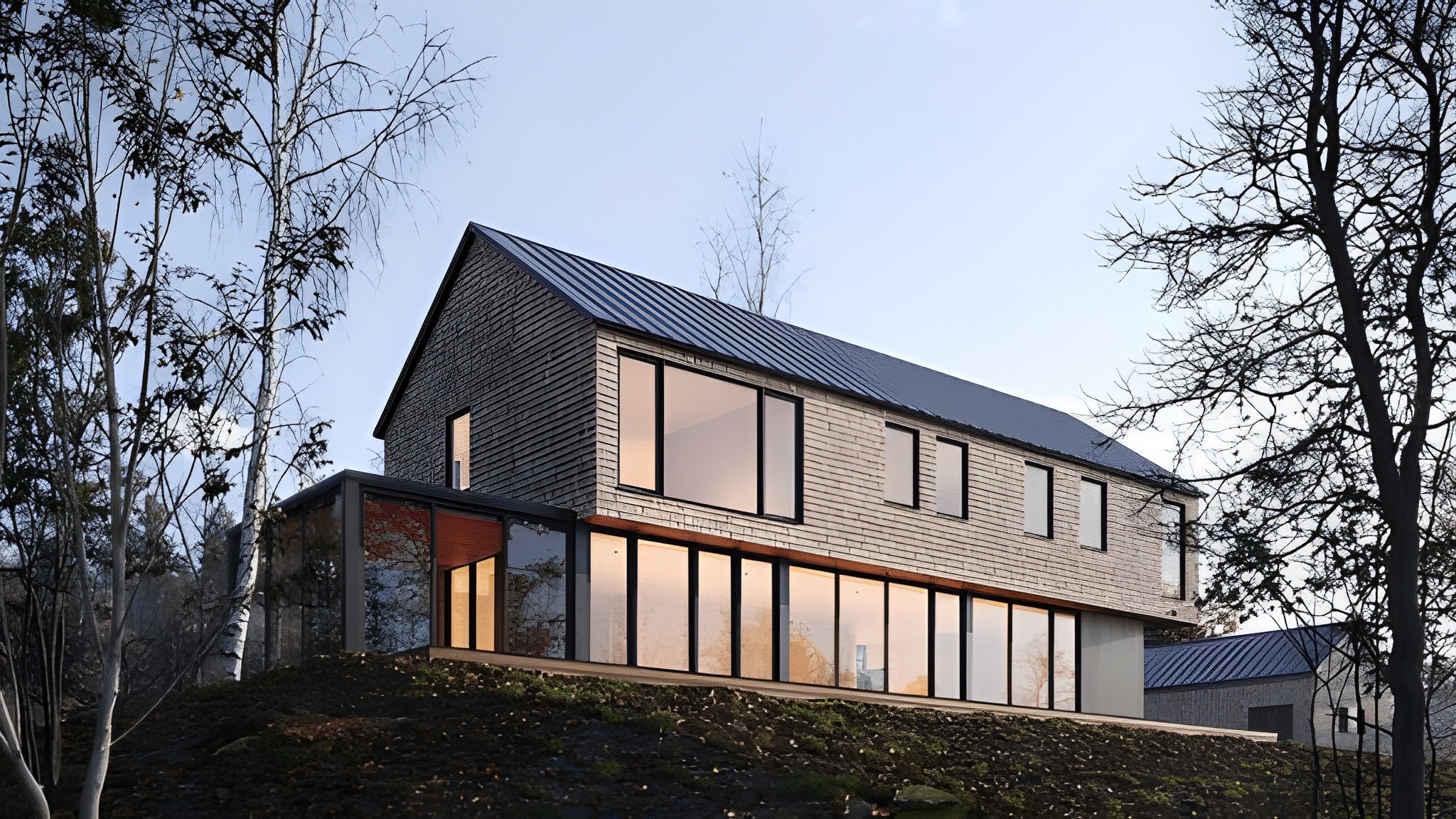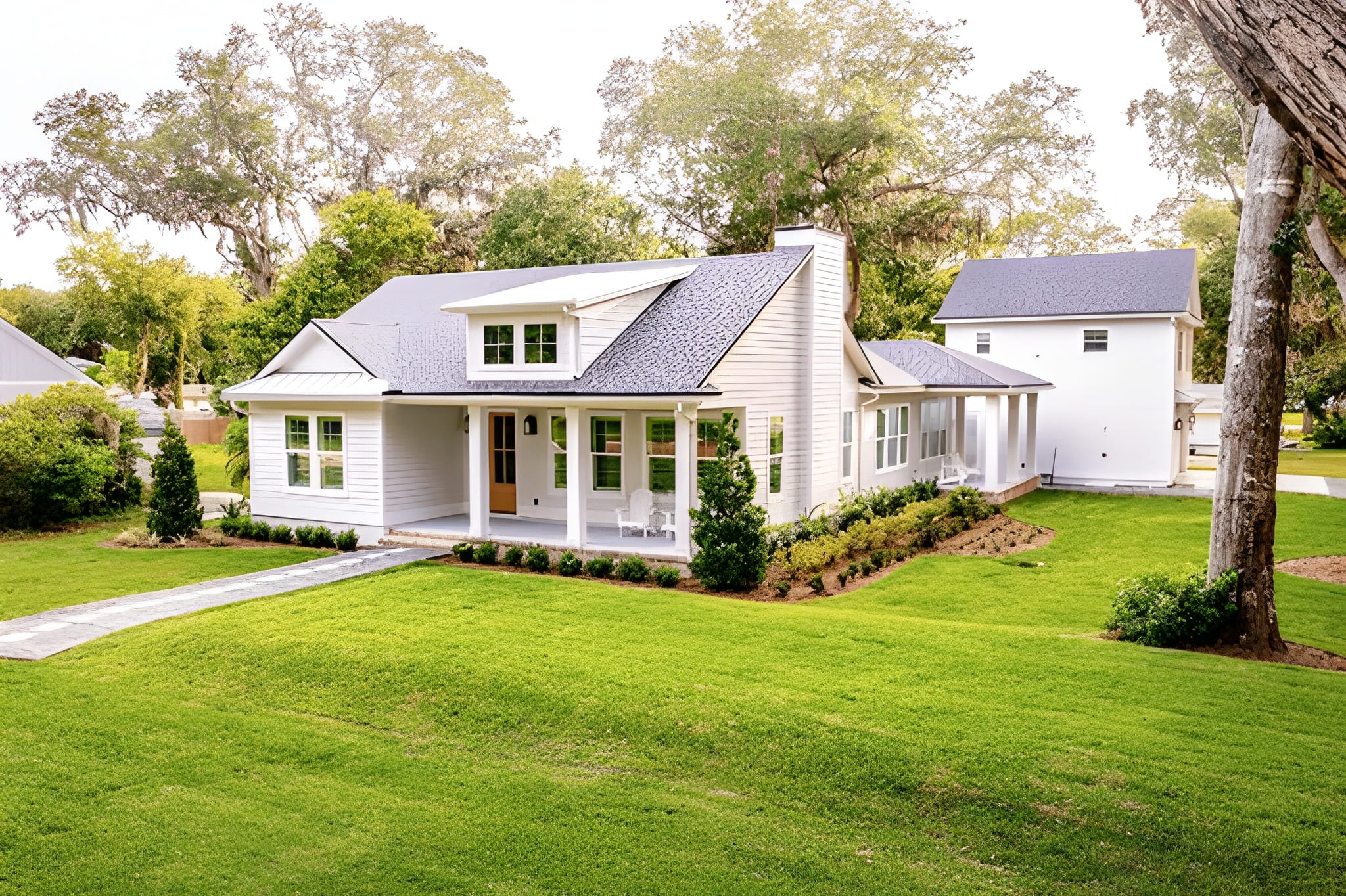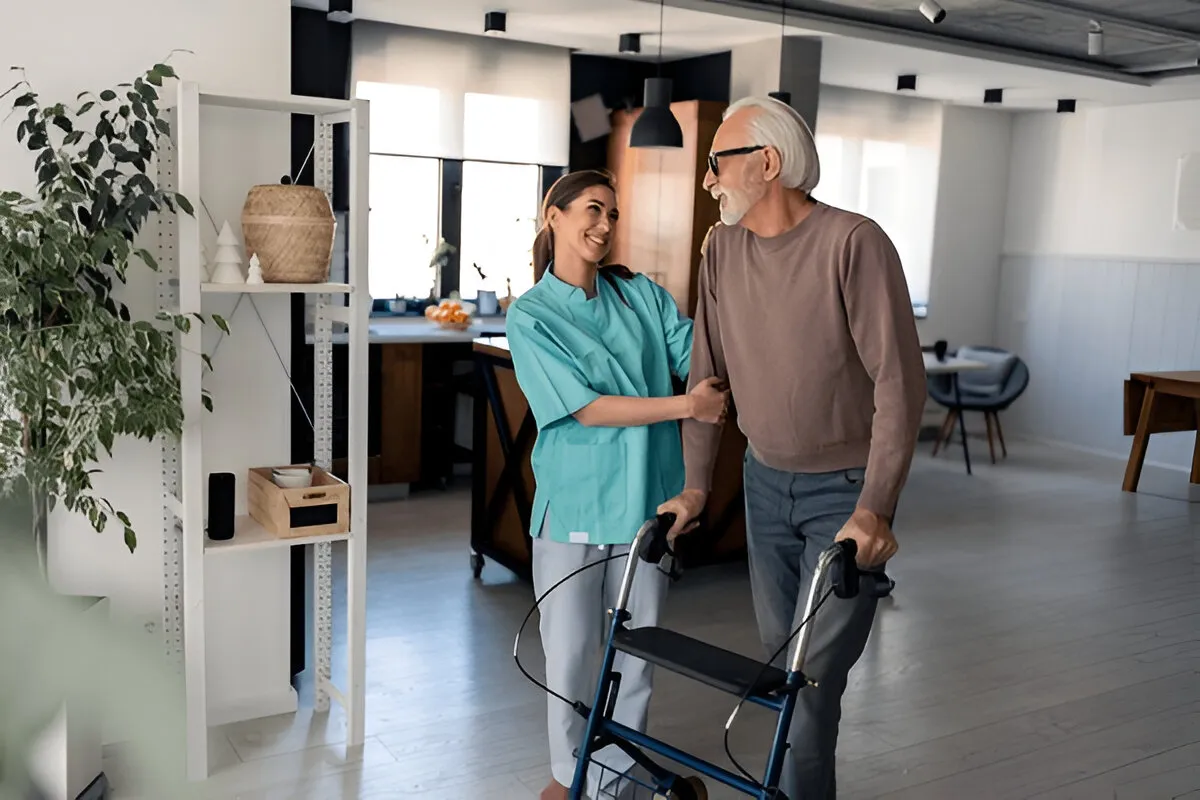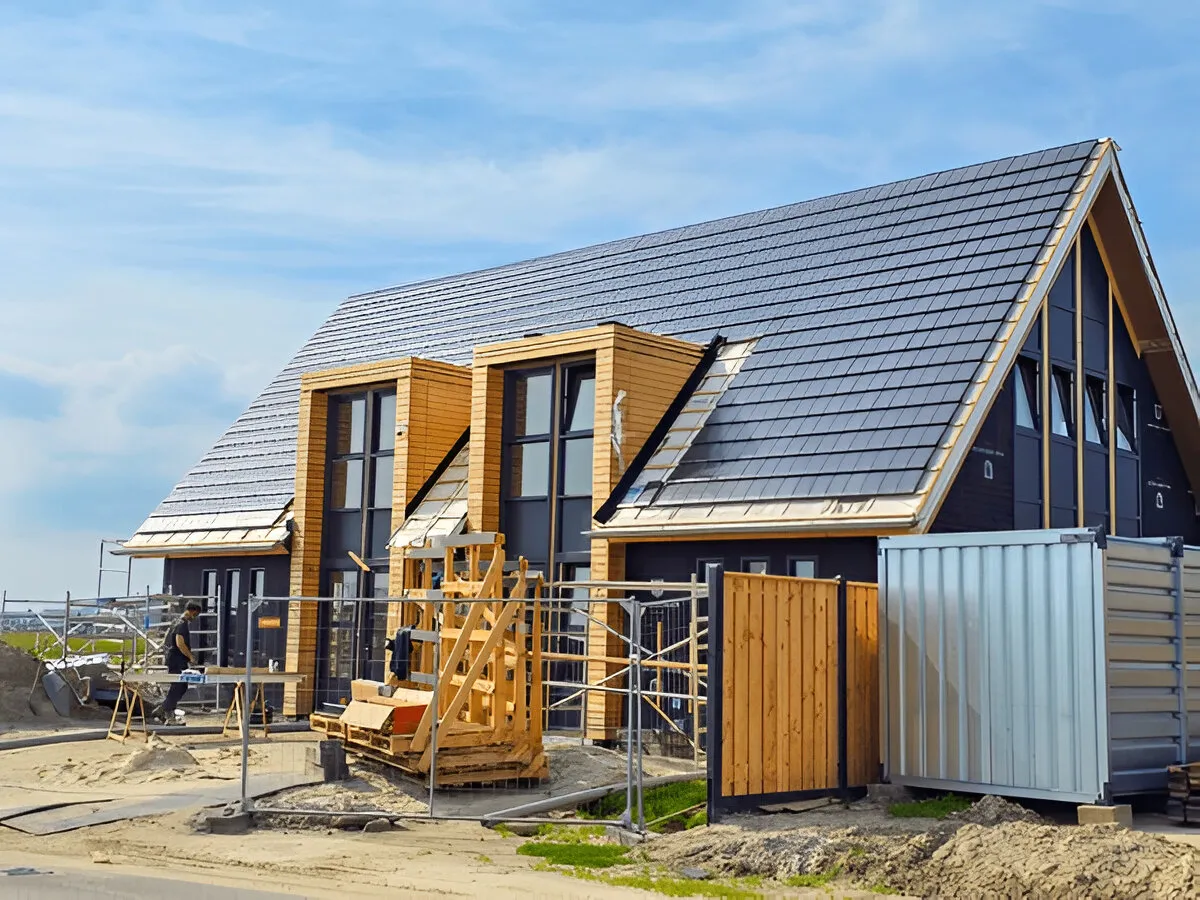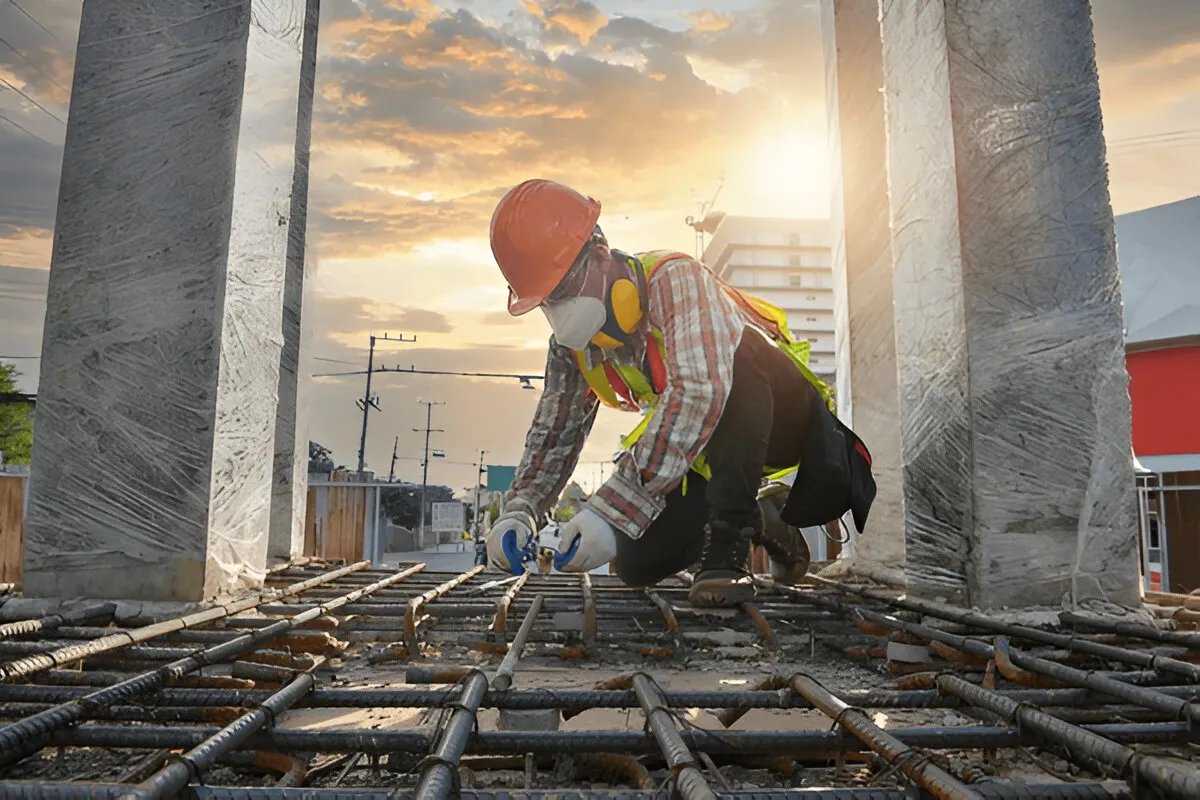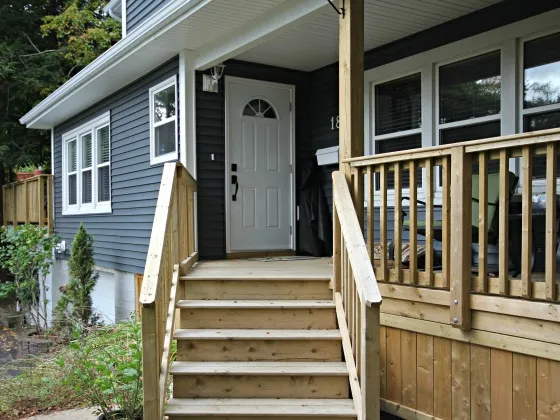Nobody plans for a fall in the bathroom. Or the struggle to open a cabinet. But for people with disabilities or aging loved ones, these small moments can quickly turn into daily stress—or worse, real injury. That’s where home improvement for disabled and elderly individuals makes a big difference.
Maybe your parent wants to stay in their home of 40 years. Or maybe you’re adjusting your home after an injury. Either way, you don’t need a full remodel to make your space safe and comfortable to move through. Sometimes, it’s a few smart updates—safer bathroom fixtures, a stairlift, or a wider doorway—that bring the biggest relief.
This guide is here to help you make thoughtful changes without the overwhelm. Here’s what you’ll find inside:
- Which home modifications offer the most safety and comfort
- Where to look for financial assistance and disability grants
- How to plan a renovation designed to help seniors and others with limited mobility
Why These Changes Matter: A Quick Look at the Numbers
If you’re asking whether modifying a home for better accessibility is truly important—it is. Here’s a plain look at why smart renovations make a world of difference.
Across Canada, 27 % of people aged 15 and older—about 8 million individuals—report at least one disability that limits daily life. Especially in older age, disabilities increase: in 2022, the most common disabilities among senior citizens in Canada were pain-related (68%), mobility (63%), and flexibility (59%).
Yet, most homes across Nova Scotia were built without features like wider doorways or zero‑step entries. Many families end up adapting later—sometimes after a fall or health change.
Here’s a quick look at who needs modifications most—and what supports are essential:
| Who | Percentage with Disability | Home Needs |
| All adults (15+) | About 27 % (~8 million people) | Safer layouts, accessible doors |
| Seniors (65+) | Around 60 % | Fall-proof bathrooms, easy kitchen access |
| Those with mobility limits | ~10 % report mobility issues | Ramps, stair lifts |
These numbers spotlight a real need. Proper changes not only cut risks like falls—they bring freedom and ease into everyday life.
What Makes a Home Easier to Live In: Smart Modifications That Work
Every house is different. But when someone in the home has trouble with movement or balance, certain updates and home repairs make life a whole lot safer—and simpler. The goal isn’t to change everything. It’s to remove obstacles that get in the way of daily activities like cooking, bathing, or getting in and out of the house.
Here are some of the most helpful changes people are making across Nova Scotia and beyond to reduce safety risks:
Entry and Access
- Build a gentle ramp or install a lift to replace steps
- Use non-slip surfaces on walkways and porches
- Widen the front door to allow room for mobility aids
- Replace door knobs with lever-style handles
Movement Inside the House
- Create wider paths between furniture and rooms to improve accessibility
- Install brighter lighting and light switches at reachable heights
- Use flat thresholds or remove them to avoid trips
- Add grab bars along hallways for extra support
Bathroom Adjustments
- Install a walk-in shower with a hand-held showerhead
- Raise or replace the toilet for easier use
- Add a shower seat and non-slip floor tiles
- Put in grab bars near the toilet and inside the shower
- Switch to lever-style faucets that are easier on the hands
Kitchen Fixes
- Lower one section of the countertop and leave space under the sink
- Use drawers instead of overhead cabinets
- Add pull-out shelves and easy-turn knobs on appliances
- Make sure the flooring is smooth and easy to roll over
These updates don’t just make a space more usable—they help people stay independent. Whether someone is recovering from surgery, living with a long-term condition, or simply getting older, a few key changes can keep them safe and confident at home.
Universal Design: Making Homes Work Better for Everyone
Not every home needs a full renovation to be more welcoming and easier to move through. Sometimes, thoughtful layout changes and small upgrades can make a big impact—without making the house feel clinical or overbuilt. That’s the idea behind universal design.
It simply means creating spaces that work for all people—young or old, walking or rolling—without needing a bunch of extra adjustments down the road.
Here’s how universal design shows up in real homes:
- Wider doorways and open floorplans that allow easy movement
- No-step entries so anyone can come and go without needing a lift
- Reinforced bathroom walls so grab bars can be added later if needed
- Rocker light switches and lever handles that don’t require grip strength
- Kitchens with multi-level surfaces so they’re usable from a standing or seated position
Groups like Accessibility Standards Canada are now encouraging builders and renovators to follow these practices from the start.
Even better? These changes often help with resale value, since more families are looking for homes that are move-in ready for all ages and needs.
You don’t need to change everything all at once. But by using universal design ideas, you can make your home more comfortable, future-ready, and welcoming for everyone who walks—or wheels—through the door.
How Case Design/Remodeling Halifax Helps You Plan and Build with Confidence
Making your home more accessible shouldn’t feel like guesswork. At Case Design/Remodeling Halifax, the goal is simple: help you figure out what changes make sense, what fits your budget, and how to get it done—without surprises along the way.
Here’s what the process of modifying your home looks like when you reach out:
- Start with a conversation. You’ll meet with a designer who listens to your home repair program needs—whether it’s adding a wheelchair ramp, commissioning bathroom modifications, or preparing for aging in place.
- See your options before you commit. Through the Initial Planning Agreement, you get to review floor plans, health and safety ideas, and price estimates before making any big decisions.
- Everything is handled in-house. From permits to 3D renderings, the team coordinates every detail. That includes working with licensed specialists—like architects and certified aging-in-place pros.
- Fixed pricing. No guessing games. You get one clear price for the work being done to modify your home for individuals with disabilities.
- Trusted trades, no strangers. The same team stays with your project from start to finish, with skilled tradespeople who respect your home adaptations and your schedule.
No matter the size of the renovation project, Case Design/Remodeling Halifax takes care of the full process—from design to construction—with care, professionalism, and attention to what your household actually needs.
Help Paying for Updates: Home Renovation Grants and Support Available in Nova Scotia
Cost can be a major barrier when it comes to making your home safer for people with disabilities and older adults. The good news? If you live in Nova Scotia, there are real financial assistance programs designed to help with accessibility updates—especially if you’re on a low-income or caring for someone with a long-term disability.
Many of these programs are designed for seniors or people with disabilities who need help staying safe at home. Others provide funding to families or individuals making updates to support mobility, safety, or day-to-day independence.
Here are a few local programs worth knowing about that can help cover the cost of home improvements for the disabled:
| Program Name | What It Offers | Who Can Apply |
| Accessible Housing Program | Up to $10,000 grant + $8,000 forgivable loan for accessibility upgrades | Low- to moderate-income homeowners |
| Housing Repair and Accessibility Program | Up to $18,000 for critical safety updates and mobility-related changes | Seniors and eligible individuals with limited income |
| Access-A-Home Program | Up to $7,000/year, with a $14,000 lifetime max, for making homes usable for wheelchair users | Homeowners or landlords with a tenant who uses a wheelchair |
Before applying, check the eligibility rules. Some programs focus on income, while others ask for medical documentation or proof that someone in the home has a mobility challenge.
Also worth noting: most of these options are grants, not loans. That means you don’t have to pay the money back—as long as you follow the program’s terms.
A few minutes of paperwork could lead to thousands of dollars in support—and a home that’s much safer and easier to live in.
Helpful Tips Before You Get Started
A few smart decisions early on, while installing accessible home modifications, can save time, money, and headaches down the road. Here are some things worth considering before starting home renovations for disabled and elderly individuals:
- Start with the areas you use most. Focus on spaces like bathrooms, entrances, or the kitchen—places where better layout or fixtures can make daily life easier right away.
- Check your local programs first. Before spending a dime, look into available grants or housing assistance programs. Some grants provide funding for more than you expect.
- Write down your daily challenges. Think through what slows you down or feels unsafe at home—like reaching upper cabinets or stepping over the tub. This helps shape the right kind of updates.
- Involve someone who knows what to look for. Whether it’s a contractor, therapist, rehabilitation, or accessibility specialist, it’s smart to have experienced eyes on your space.
- Don’t rush. Planning ahead gives you more control over both cost and outcome.
Most of all, remember: this isn’t about making your house perfect. It’s about making it work better for the people who live in it.
FAQs: Home Improvement for Disabled and Elderly
Q. Can I make accessibility updates if I’m renting my home?
Yes, but you’ll need written permission from your landlord. In many cases, smaller changes like installing grab bars or using portable ramps are approved quickly. For bigger work—like widening doorways—you may need to agree to restore the space if you move out. Some provinces also protect tenants’ rights under fair housing rules, so check your local laws.
Q. How long does it usually take to finish an accessibility renovation?
It depends on the scope of work. A basic bathroom update might take 1–2 weeks, while a larger remodel could run several months. Planning ahead helps speed things up—especially when permits or design drawings are involved.
Q. Do these upgrades increase my home’s value?
They can. More buyers today are looking for homes that support aging in place or offer flexibility for changing needs. Features like level entryways or no-step showers are especially appealing—and may give your home an edge in the market.
Q. Will the grant money cover everything I need?
Usually not 100%. Most programs help cover part of the cost, especially for updates to remove health and safety hazards. It’s smart to get a clear quote before applying, so you know what your portion will be.
Q. What happens if my condition changes later on?
That’s a good reason to think long-term. Some upgrades—like reinforced walls or open layouts—make it easier to adjust later without starting from scratch. If you’re not sure what the future may hold, it’s okay to build in flexibility now.
Ready to Take the First Step?
Making your home easier to move through, safer to live in, and more supportive of daily life doesn’t need to feel like a massive project. Sometimes, it starts with a single change. Other times, it means rethinking how a space works for someone you care about. Either way, the goal is the same: keep the people you love comfortable, capable, and confident in their home.
At Case Design/Remodeling Halifax, the team knows that every household has its own story—and no two renovation plans should look the same. Whether you’re just gathering ideas or ready to move forward, you don’t have to figure it all out alone.
Reach out today to learn how we can help you plan smarter, build better, and make your home work the way it should—for everyone who lives there.



